Posted under U.S.
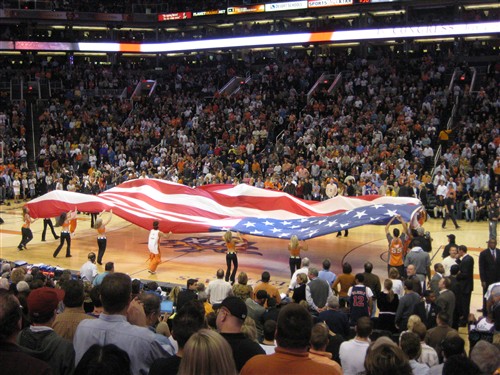
The long way home from Moscow was broken up into several legs both to ease the transition and make a couple of convenient stops along the way. We re-entered the United States in Boston and made plans to spend one night in the city to meet little Maaden Rooney – pride and joy of dear friends, Mark and Meredith. At the Boston airport we collected our backpacks for almost the last time and stopped at the information desk to get directions to our hotel. The gentleman at the desk was friendly and helpful and we laughed at the wonderful ease of the English-language transaction. It was good to be home.
With smiles plastered on our faces, we walked to the train stop and found our route. On the train, we listened in wonderment as each stop was announced in English. There was no need to count stops or decipher foreign characters. It was brilliant! Then, as we were changing trains, an altercation ensued nearby where, in between the cursing and Ebonics, threats of people getting shot echoed through the underground station. Whoa, reality check! Suddenly, the stars in my eyes were shrouded by a dark cloud as I was reminded that, while America is the greatest country on Earth, not everything is roses.
Seeing Mark, Mer and Maaden was great. We spent about an hour fawning over the little superstar at the hotel and then went to dinner at a place nearby. The menu was excellent but all we wanted was salad – good old American salad with lots of lettuce and fresh ingredients. This, my favorite food, proved to be the most difficult dish to find on the road. Oh, salad is on a lot of menus around the world but often the main ingredient, instead of lettuce, is potatoes or beets or some distant relative of a recognizable vegetable that defeats the whole purpose of ordering a salad in the first place. Pardon the rant – it’s a sensitive subject. Our first American, non-McDonald’s salads were absolutely divine. It was good to be home.
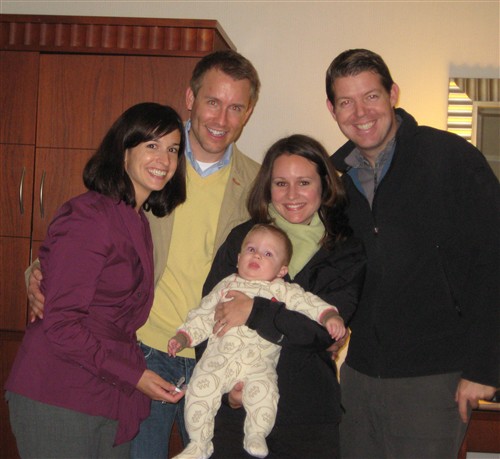
Early the next morning, we flew to Dallas, where we had purposely inserted an 8-hour layover on our way to Phoenix – our temporary final destination. At DFW Airport, we rented a car and drove to our storage unit where we filled two small roller boards with as many jeans, shoes, and sweaters as we could fit inside. We were there for about two hours, sifting through our possessions, smiling at things we forgot we owned, and dazzled by the breadth of our respective wardrobes.
Next, we drove north to our old neighborhood in Keller to cast our vote in the 2008 Presidential Election. Texas is a die hard red state but, since we have been following the campaign from abroad and have visited so many places where, sadly, people do not have the right to vote or are terrorized into voting for corrupt rulers, we felt strongly that it was important to exercise our right to vote for the next leader of our country.
We drove by our old house next to make sure the new owners were keeping the landscaping up to our standards and to reminisce about the life we left behind to pursue a dream. It was a beautiful house and we loved living there but it was so big for the two of us that sometimes we felt swallowed up by all of the empty space, consumed by a need to fill that space with “stuff”. Seeing that house again only reinforced our desire to start small this time.
We stopped for an early dinner at one of our favorite restaurants in Southlake on or way back to the airport. The weather was sunny and warm and we sat on the patio, enjoying the superb American service – the friendliest, most attentive service that you can get anywhere in the world.
We finally arrived at Phoenix’s Sky Harbor Airport around 9pm. Aaron’s mom picked us up and drove us back to her place to reunite with our own little pride and joy – a nine-pound furry angel, named Lena (aliases: Lenasaurus Rex, Little Miss Brownbottom, Poop-a-doo, Little Goodie Four-Paws). Her physical absence from our life made each day on the road bittersweet and it wasn’t any easier on the last day of our trip than it was on the first day. We LOVE our dog!
It was a tearful reunion. She was so excited that she was whimpering uncontrollably as she jumped frantically from one of us to the other, smothering us with wet puppy kisses. Her reaction melted our hearts and she has barely left our sides since. As she slowly learns to understand that Momma and Daddy are never leaving her again, we are making up for fourteen months of lost time. We are relieved to find our little furry angel just as we left her. Grandma has spoiled her well.
As we gradually reintegrate ourselves into American life, the experiences that we have had over the past year-and-a-half will shape our values and desires as well as the way we view the world. We are fascinated by the international stage and more plugged into world news than ever before. We are more conscientious about being better global citizens. We want to give more and consume less. We want experiences more than things. We want to be travelers in our own country – there are brilliant things to see within our own borders. Most importantly, we want to live every day as if it were our last; to always be mindful of the blessings in our life. We anticipate many challenges and temptations as we plunge back in to American consumerism and many of our former vices may rear their heads once again. We can only hope that every choice will be made with deeper wisdom and worldly understanding of what is really important.
It’s good to be home.
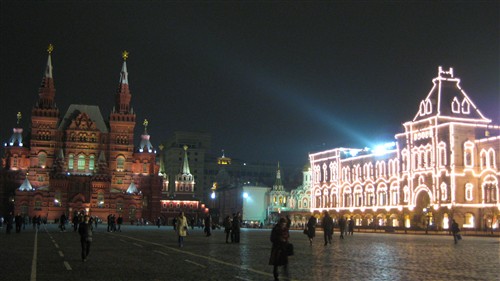
 From the first day of our arrival in Saint Petersburg to our last day in Moscow, Russia did not disappoint. Russia has a dizzying number of things to see: beautiful baroque skylines, unique onion-domed cathedrals, fascinating museums, and sober Soviet-era buildings across from modern high-end shopping malls. All corners of Moscow and Saint Petersburg are under constant surveillance by an intimidating number of military and policemen and all corners are connected by one of the most efficient (if not foreign-user-friendly) and utilized public transport systems in the world, which is also heavily policed.
From the first day of our arrival in Saint Petersburg to our last day in Moscow, Russia did not disappoint. Russia has a dizzying number of things to see: beautiful baroque skylines, unique onion-domed cathedrals, fascinating museums, and sober Soviet-era buildings across from modern high-end shopping malls. All corners of Moscow and Saint Petersburg are under constant surveillance by an intimidating number of military and policemen and all corners are connected by one of the most efficient (if not foreign-user-friendly) and utilized public transport systems in the world, which is also heavily policed.
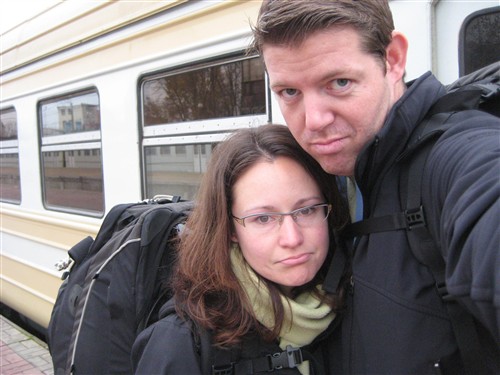 As this epic fourteen-month journey comes to an end, we are both happy and sad. The most amazing, intense, life-changing chapter in our lives is coming to a close. We have come to feel at home on the road and enjoy the simplicity of living out of our backpacks. We find ourselves addicted to the crazy adventures and, even more so, addicted to learning. We have loved spending all of this time together. It has drawn us closer and bonded us tighter than we ever could have imagined. But all good things must come to an end and, as we think about seeing our family, friends and our sweet little dog, we find ourselves as exhilarated as we were on the first day of this adventure. While we are sad to close such a brilliant chapter in our lives, we are excited to start down a new path and wildly curious to see where it takes us. To conclude with the last three lines from my favorite Robert Frost poem:
As this epic fourteen-month journey comes to an end, we are both happy and sad. The most amazing, intense, life-changing chapter in our lives is coming to a close. We have come to feel at home on the road and enjoy the simplicity of living out of our backpacks. We find ourselves addicted to the crazy adventures and, even more so, addicted to learning. We have loved spending all of this time together. It has drawn us closer and bonded us tighter than we ever could have imagined. But all good things must come to an end and, as we think about seeing our family, friends and our sweet little dog, we find ourselves as exhilarated as we were on the first day of this adventure. While we are sad to close such a brilliant chapter in our lives, we are excited to start down a new path and wildly curious to see where it takes us. To conclude with the last three lines from my favorite Robert Frost poem: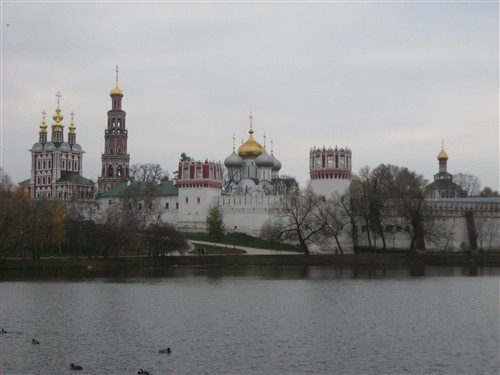
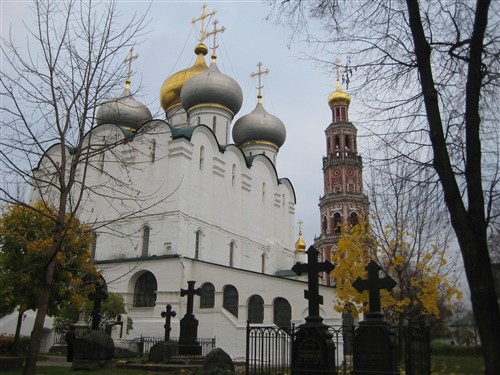 Novodevichy Monastery is located southeast of the city center on the Moscow River. Founded in 1524 to celebrate the retaking of Smolensk from Lithuania, it later served as a strategic watch guard, alerting the city of potential invaders. Today the beautiful white-walled complex with red-and-white baroque turrets, shines brightly against the backdrop of a small suburban lake and park. The obligatory gilded onion domes crown the bell tower and cathedrals housed within the fortress. Before we entered the monastery, we admired the view from afar with a lazy walk around the adjacent lake. With the trees holding on to their last golden leaves and the monastery reflecting on the windswept lake, I was, of course, in photography heaven.
Novodevichy Monastery is located southeast of the city center on the Moscow River. Founded in 1524 to celebrate the retaking of Smolensk from Lithuania, it later served as a strategic watch guard, alerting the city of potential invaders. Today the beautiful white-walled complex with red-and-white baroque turrets, shines brightly against the backdrop of a small suburban lake and park. The obligatory gilded onion domes crown the bell tower and cathedrals housed within the fortress. Before we entered the monastery, we admired the view from afar with a lazy walk around the adjacent lake. With the trees holding on to their last golden leaves and the monastery reflecting on the windswept lake, I was, of course, in photography heaven.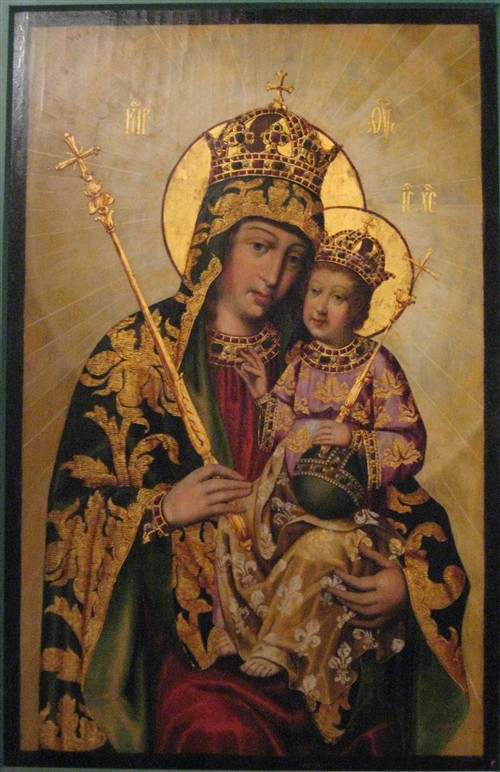 The compound is still an operating monastery but the highlights for us were the two special exhibits which displayed the monastery’s impressive collection of Orthodox iconography, art and religious artifacts. There were other notable sights including the Smolensk Cathedral, an imposing bell tower, and the adjacent Novodevichy Cemetery – final resting place for several famous (and infamous) Russians.
The compound is still an operating monastery but the highlights for us were the two special exhibits which displayed the monastery’s impressive collection of Orthodox iconography, art and religious artifacts. There were other notable sights including the Smolensk Cathedral, an imposing bell tower, and the adjacent Novodevichy Cemetery – final resting place for several famous (and infamous) Russians.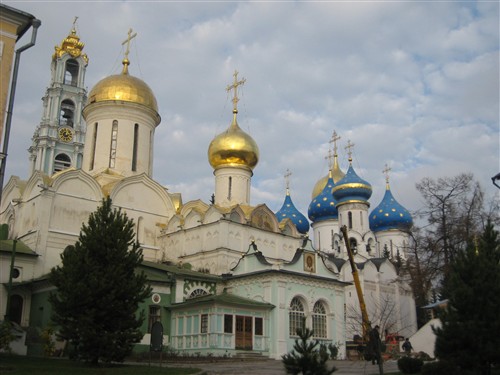

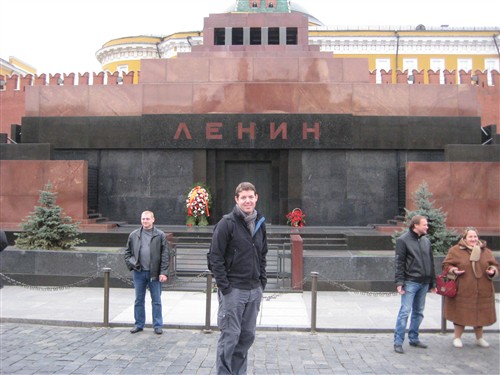 Inside the mausoleum, we climbed a short, dark stairway into a dark room. In the center, Lenin’s illuminated corpse glowed like the moon inside a glass case. He wore a dark suit and his legs were covered in red velvet cloth. One hand was clenched in a fist but the other lay flat and I recall that his fingernails looked to be covered in yellowish fungus. We stared, dumbstruck, unable to look away. We were paralyzed with morbid fascination. One of the guards inside urged us forward and we started moving, albeit slowly, around the perimeter. It was a powerful experience. Lenin, who murdered over a million of his own people, abused and starved countless others to push through a social and political agenda that simply doesn’t work, is revered. After Lenin’s death, Stalin had Lenin’s brain removed so that he could study the “perfect Communist brain”.
Inside the mausoleum, we climbed a short, dark stairway into a dark room. In the center, Lenin’s illuminated corpse glowed like the moon inside a glass case. He wore a dark suit and his legs were covered in red velvet cloth. One hand was clenched in a fist but the other lay flat and I recall that his fingernails looked to be covered in yellowish fungus. We stared, dumbstruck, unable to look away. We were paralyzed with morbid fascination. One of the guards inside urged us forward and we started moving, albeit slowly, around the perimeter. It was a powerful experience. Lenin, who murdered over a million of his own people, abused and starved countless others to push through a social and political agenda that simply doesn’t work, is revered. After Lenin’s death, Stalin had Lenin’s brain removed so that he could study the “perfect Communist brain”.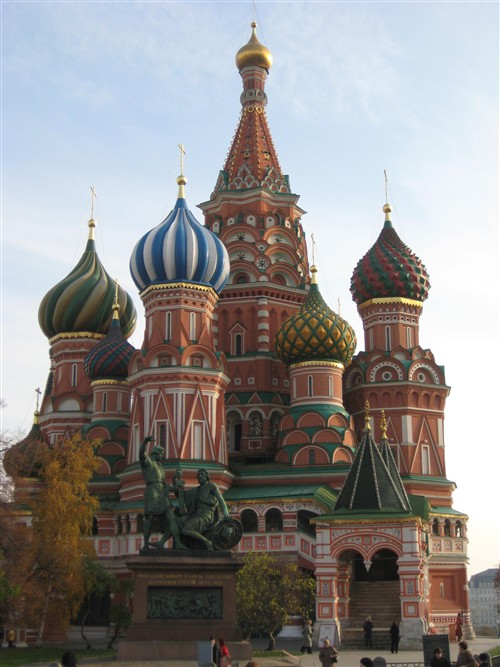 Our final stop in Red Square was Saint Basil’s Cathedral. We had photographed its brilliant polychromatic domes from every angle but we had not yet been inside.
Our final stop in Red Square was Saint Basil’s Cathedral. We had photographed its brilliant polychromatic domes from every angle but we had not yet been inside.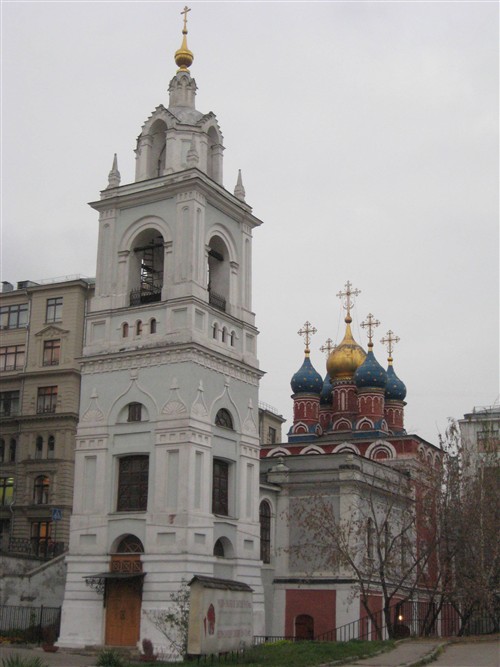 We still had a long walk ahead of us and a list of interesting places to see so we quickly recovered and set out for the medieval neighborhood of Kitay Gorod. Located just southwest of Red Square, the 13th century neighborhood was the first to be established outside the protection of the Kremlin walls. We walked the streets toward a cluster of smaller but still impressive versions of Russia’s unique onion-domed churches. Not long into our foray, we began to notice a large number of luxury cars parked along the street and several black-clad muscle men lurking about in small groups, eyeing us suspiciously as we walked by. Our instincts told us that we had stumbled upon the Russian mafia and we felt an air of uneasiness but decided that our best course of action was to play the role of ignorant tourists – we were conveniently dressed for the part – snapping excessive photos of the churches without a backward glance. The moment passed without incident, of course, but we won’t soon forget that creepy feeling of brushing up against the mob.
We still had a long walk ahead of us and a list of interesting places to see so we quickly recovered and set out for the medieval neighborhood of Kitay Gorod. Located just southwest of Red Square, the 13th century neighborhood was the first to be established outside the protection of the Kremlin walls. We walked the streets toward a cluster of smaller but still impressive versions of Russia’s unique onion-domed churches. Not long into our foray, we began to notice a large number of luxury cars parked along the street and several black-clad muscle men lurking about in small groups, eyeing us suspiciously as we walked by. Our instincts told us that we had stumbled upon the Russian mafia and we felt an air of uneasiness but decided that our best course of action was to play the role of ignorant tourists – we were conveniently dressed for the part – snapping excessive photos of the churches without a backward glance. The moment passed without incident, of course, but we won’t soon forget that creepy feeling of brushing up against the mob.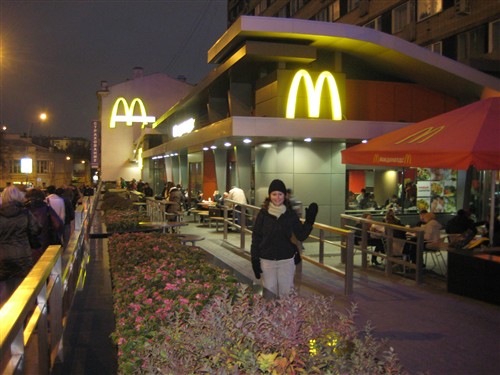 Taking the scenic route “home”, we passed by the Lubyanka Building, the former headquarters of the infamous KGB, which now houses its successor, the Federal Security Bureau; the Museum of Modern Art; and, most importantly, the world’s largest and busiest McDonald’s. With the capacity to accommodate up to 700 Hamburglars, the place was a zoo. After standing in a massive queue, we proceeded to suffer through the most excruciating ordering experience in our broad portfolio of international McDonald’s encounters. Out of 36 countries, Russia has posed the biggest language barrier. We did finally manage to communicate our order and get what we wanted but we left feeling defeated nonetheless.
Taking the scenic route “home”, we passed by the Lubyanka Building, the former headquarters of the infamous KGB, which now houses its successor, the Federal Security Bureau; the Museum of Modern Art; and, most importantly, the world’s largest and busiest McDonald’s. With the capacity to accommodate up to 700 Hamburglars, the place was a zoo. After standing in a massive queue, we proceeded to suffer through the most excruciating ordering experience in our broad portfolio of international McDonald’s encounters. Out of 36 countries, Russia has posed the biggest language barrier. We did finally manage to communicate our order and get what we wanted but we left feeling defeated nonetheless.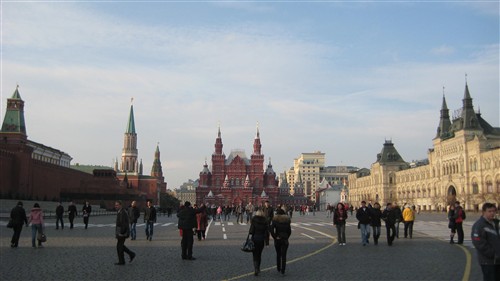
 After nearly missing our train in St Petersburg – one of the very few times on the trip that we’ve been completely unprepared and, consequently, lost – we enjoyed the eight-hour journey and arrived in Moscow surprisingly rested. We easily navigated the metro system and found our cozy flat without trouble. Our friendly host, Tanya, gave us the grand tour of the small, two-bedroom apartment that we’d be sharing with another couple for the duration of our stay. Tanya was great, spoke wonderful English, and the flat was stocked with all of our favorite amenities.
After nearly missing our train in St Petersburg – one of the very few times on the trip that we’ve been completely unprepared and, consequently, lost – we enjoyed the eight-hour journey and arrived in Moscow surprisingly rested. We easily navigated the metro system and found our cozy flat without trouble. Our friendly host, Tanya, gave us the grand tour of the small, two-bedroom apartment that we’d be sharing with another couple for the duration of our stay. Tanya was great, spoke wonderful English, and the flat was stocked with all of our favorite amenities. On approach, the Kremlin is striking. Tall red walls line the perimeter, the tops of onion-domed churches barely visible. In addition to the yellow and white government buildings that dominate the interior, there is an inexplicably out of place concrete and glass concert auditorium, and numerous beautiful cathedrals, each topped with glimmering golden domes. With most of the official buildings off-limits to visitors, we spent the majority of our time exploring the cathedrals within the Kremlin walls. We walked from one magnificent cathedral to another, first admiring the unique exterior architecture of each, and then the iconography that literally covered their interiors from floor to ceiling. Every artistic medium was beautifully represented: frescoed walls, carved and tempera-painted wooden icons, gilded silver iconostases, and marble tombs. We were mesmerized by the abundance of religious art.
On approach, the Kremlin is striking. Tall red walls line the perimeter, the tops of onion-domed churches barely visible. In addition to the yellow and white government buildings that dominate the interior, there is an inexplicably out of place concrete and glass concert auditorium, and numerous beautiful cathedrals, each topped with glimmering golden domes. With most of the official buildings off-limits to visitors, we spent the majority of our time exploring the cathedrals within the Kremlin walls. We walked from one magnificent cathedral to another, first admiring the unique exterior architecture of each, and then the iconography that literally covered their interiors from floor to ceiling. Every artistic medium was beautifully represented: frescoed walls, carved and tempera-painted wooden icons, gilded silver iconostases, and marble tombs. We were mesmerized by the abundance of religious art.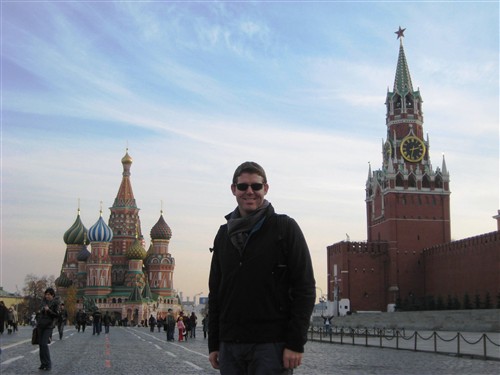 We stopped in the middle of the square and looked around. More than two decades after perestroika, Gorbachev’s period of reform, there was still a palpable Cold War feel here that I couldn’t shake. Lenin’s mausoleum, still heavily guarded by soldiers, inexplicably remains a focal point on the square even after the failed experiment of communism. The massive wall and foreboding towers behind the mausoleum separate the Red Square from the Kremlin, a physical reminder of the Soviet Union, distinguishing the huddled masses from the powerful elite. Yet, incongruously, one of Russia’s finest luxury shopping malls shines like a beacon of capitalism no more than 200 meters away. And the boldly beautiful St Basil’s Cathedral is so awe-inspiring that you keep coming back to it again and again. Red Square is one big contrast – and I loved it. It’s big enough to exude power, but small enough to be intimate. On our trip we have seen many of the grandest plazas in the world but Red Square was, by far, my favorite.
We stopped in the middle of the square and looked around. More than two decades after perestroika, Gorbachev’s period of reform, there was still a palpable Cold War feel here that I couldn’t shake. Lenin’s mausoleum, still heavily guarded by soldiers, inexplicably remains a focal point on the square even after the failed experiment of communism. The massive wall and foreboding towers behind the mausoleum separate the Red Square from the Kremlin, a physical reminder of the Soviet Union, distinguishing the huddled masses from the powerful elite. Yet, incongruously, one of Russia’s finest luxury shopping malls shines like a beacon of capitalism no more than 200 meters away. And the boldly beautiful St Basil’s Cathedral is so awe-inspiring that you keep coming back to it again and again. Red Square is one big contrast – and I loved it. It’s big enough to exude power, but small enough to be intimate. On our trip we have seen many of the grandest plazas in the world but Red Square was, by far, my favorite.